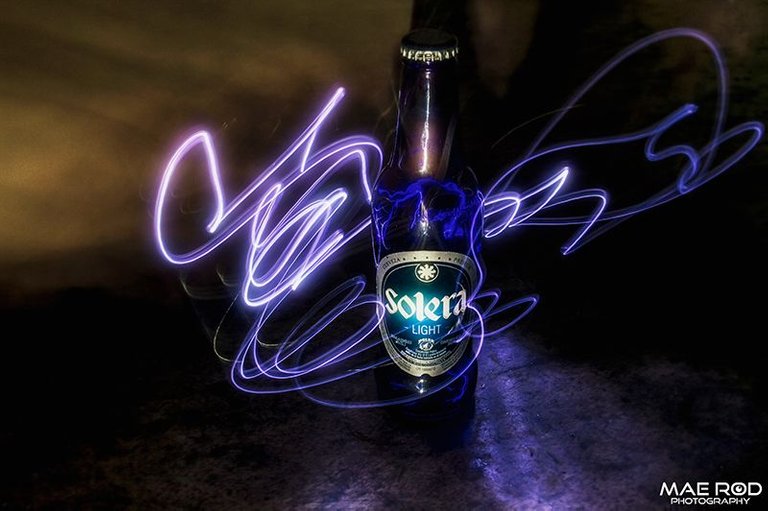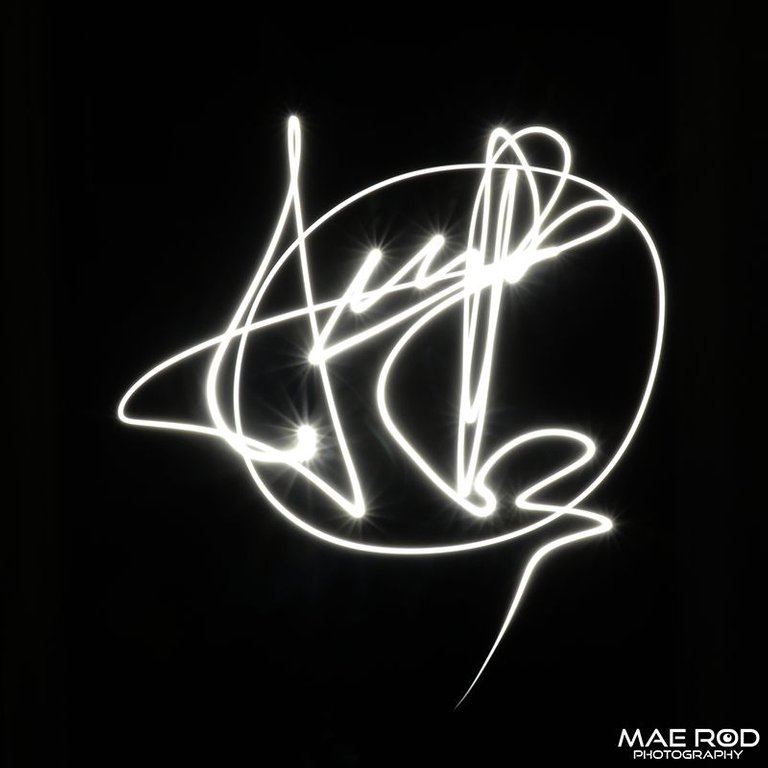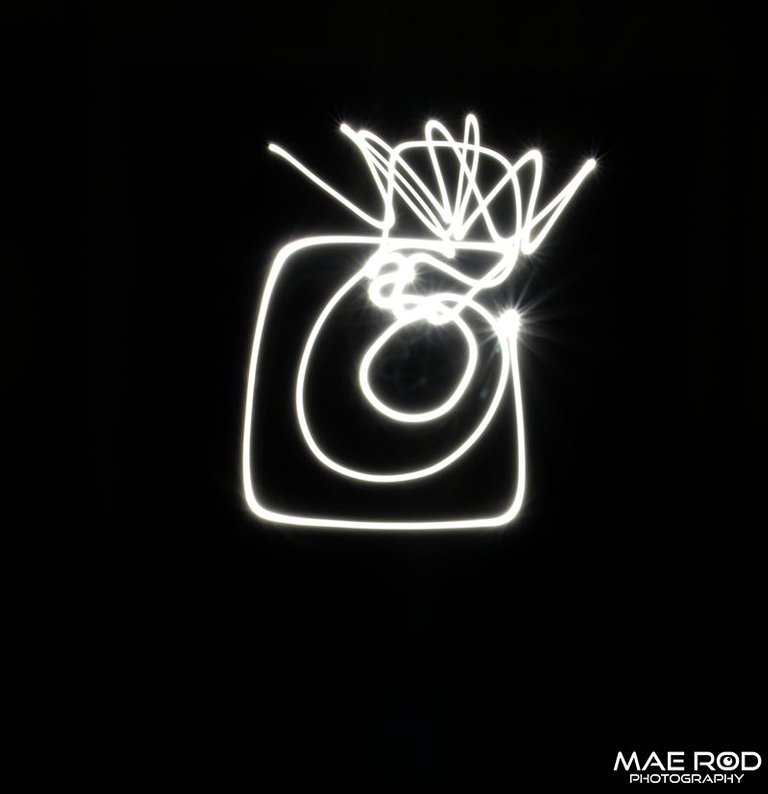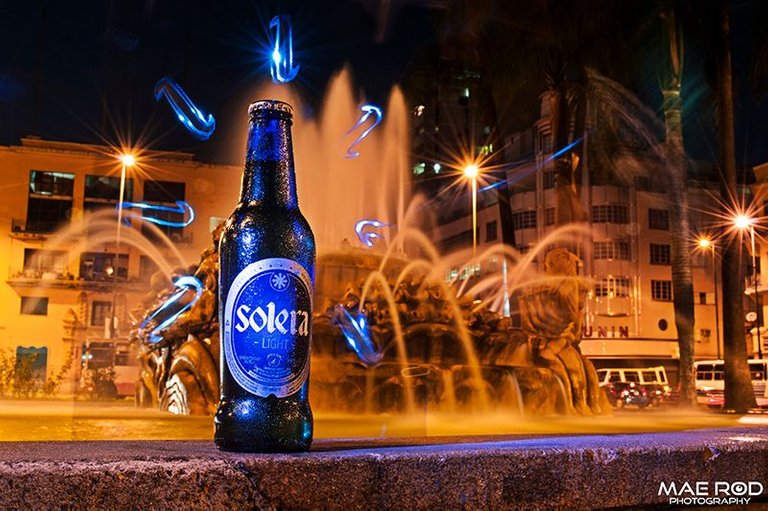Hello, friends of Steemit! Yesterday I made a small trap to publish this photo and not explain how I did it:

Flashes, Mae Rod. Nikon D3200.
Well, as the says the said:"make good on a promise" ;)
A few days ago I came across a publication that sparked my interest in talking about this topic. And is that a friend, @gabyen3d, decided to experiment with his camera and achieved a spectacular lightning burst. When I saw her post, I was inspired and I decided to ask her if I could mention it because I would soon develop that topic, and she kindly replied that I could. Here I will leave her post for you to see that great photograph: https://steemit.com/photography/@gabyen3d/estallido-de-luces
Long exposure photography is a photographic technique which, through certain adjustments of values, allows us to capture fixed or moving elements creating effects of stelae, running or distorted elements. To understand a little how everything works, and what you should do to achieve it, here are some recommendations, but first we must know some basic photography concepts, so I suggest that you first see my post: https://steemit.com/photography/@maerod/photography-for-beginners-some-tips-and-examples-part-ii
Also go to this link, where you will learn how to manage the photometer, a fundamental tool to achieve the perfection of this technique: https://steemit.com/photography/@maerod/photography-for-beginners-some-tips-and-examples-part-iii
Once understood what is the ISO, shutter speed, aperture and knowing how does the photometer works on our camera, now we will proceed to the use of all that knowledge and we will put it into practice with one of my favorite techniques.
We are going to pose a very entertaining activity, but first I will give you a list of things you may need for it:
• Reflex camera.
• Tripod.
• Remote trigger (if you don't have one, you can use your camera's timer).
• Small flashlight (if you have some colored led, the result will be great).
The first thing we must define is the amount of light present in space. These types of photos can be done both day and night, although the results achieved in dark places are impressive, so I suggest you wait for it to be at night to do this activity.
Assuming that we are at night, we may think that we need a certain amount of light, but understanding that the light source will be the lantern and is our object to be photographed, it will not be necessary to require our camera to give us more light.
Therefore, our ISO values will be low, ie an ISO value of 100; The opening of the diaphragm could be a value between the f / 8 and f / 16. Finally, having defined these values, now we can play with the shutter speed, which we could put in ½, or values below this.
It is important to keep in mind that we must consider the values expressed by our photometer, as this will be indicating the measurements of light, and if we have underexposed or overexposed our photo. Ideally in this case, we should underexpose a bit because the light of the flashlight is a strong light and you will not lose so much information. To underexpose, I advise you to play with the opening of the diaphragm and not with the shutter speed. This statement forces me to give you a secret ... But don't tell it anyone!
Here's the secret to this trick: long exposure will depend entirely on the shutter speed. By reducing the speed at which our camera captures the image, all the information or action that happens in the time span we have placed will be collected and translated into a photograph. Therefore, the longer you put it to your camera (values below 1/8), the more information you can capture and the longer time it will give you to experience.
We have defined our values, but now, how do we know we are taking long exposure photos?
To do this experiment, I recommend you to put the camera on a tripod, put the timer to the maximum so you have time to prepare (or use the remote trigger in case you have it) and have your little flashlight on hand. Assuming you have set your timer on, you should stand in front of your camera with the flashlight on, aiming at the target, and as far as your camera shoots, try to make figures with the flashlight by moving your hands at random. I recommend you to make some signature or some simple drawing like a square house or a camera (I started making a signature).
When the shutter sounds, you have already captured the image. Observe the result. If you feel that you can still achieve a better shot, lower the shutter speed and close the diaphragm aperture a bit. Try again and see the result. Repeat this process until you have achieved the signature.
The result should be something similar to this, but with your signature:

If you've got the flash of light quite similar to the one in my photo, Congratulations, you've made it!
I present you the beautiful technique of "painting with light", the most fascinating and artistic branch of photography.
Here I leave another photo, where I try to make a camera. I must admit that it isn't my best work, but at least it resembles a camera (or at least I think so hahaha).

You should practice a lot! Once you master the technique, the limit is the sky. Use your creativity, and you can achieve good photos like these:

Plaza So' Leary, Mae Rod. Nikon D3200.
This is NOT digital retouching, it is Long Exposure.
Surely you want to know how I made this photo, but a magician doesn't reveal all his tricks. Use your imagination, the limit is the sky ;)
If you have any questions, or if you would like me to write about a particular topic, write me a comment and I will respond with pleasure.
Until an upcoming post!
click here!This post received a 2.2% upvote from @randowhale thanks to @maerod! For more information,
Hi @maerod, I'm an OCD curator and I like this post. So I would like to nominate it to our daily compilation. This could get you more attention to you blog and some extra votes. Reply if you accept the nomination.
This gem of a post was discovered by the OCD Team!
Reply to this comment if you accept, and are willing to let us share your gem of a post! By accepting this, you have a chance to receive extra rewards and one of your photos in this article may be used in our compilation post!
Gems! We strive for transparency.You can follow @ocd – learn more about the project and see other
Sure my friend, @elteamgordo! No problem with that! I accept your offer ;)
Gracias, acabo de ver que eres un hermano venezolano. Te voy a nominar para el post de mañana. Te aviso si eres elegido. Saludos desde México.
Hermano, que gusto saber que eres venezolano. Muchas gracias por la nominación. Te deseo mucho éxito en México! Un gran abrazo!
Jajaja una disculpa creo me di a entender mal, soy mexicano pero les tengo mucho aprecio a los hermanos venezolanos y latinoamericanos en general. Saludos!
Jajajaja no hay problema! Seguimos siendo hermanos igualmente ;) Un abrazo!
Hola, nada mas para avisarte que si te publicaron en el post de hoy, lo puedes ver aqui. Esperemos que en próximas horas este se xonvuerta en mas votos para tu post. Saludos y felicidades!
Great post, even though i already know quite a lot about it, i have enjoyed your images. Cheers!
Oh, I've seen your photos. You are a pro, bro! Your words are very well received ;)
Yours too:) And there is always something new to learn and ignorance destroys. Keep up nice postings, it's a joy to read.
The signature idea is really cool! Thanks for sharing!
Thank you for taking the time to read it, @bitatlas! Greetings :)
I am very about your post content, I want to learn a lot from you
Oh, thank you very much @ifraim! I'm glad you find my post useful! :)
ciertamente un mago no revela todo su secreto, pero te quedo muy bien me gusta mucho!!! Saludos
Muchisimas gracias, @yecapa! Que bueno que te haya gustado :)
light painting is a great technique, your creativity trully comes out, sparklers, fire, lazer, flash light, you can paint entire darkened scenes all with light, but you have to quick, unless you have the tool to keep your shutter open for as long as you like, then battery or power becomes ur olnly issue, keep it up freind+
Totally right my friend, @isawent! Battery could be our only issue, but if you plan all what you're about to do in the production of a photo, that wouldn't be a problem. I'll be talking about pre - production, production and post - production very soon! Stay tuned ;)
so right
im looking foward to seeing + shareing some of my own long exposure work soon,
and doing more
thanks for the isperation bud++
I hope you to share that cool stuff with me, @isawent! ;)